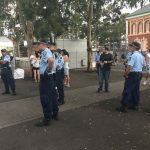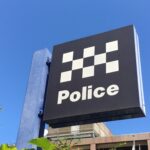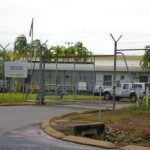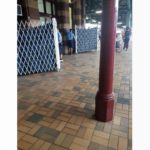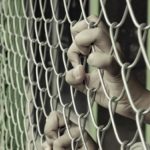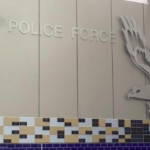NSW Authorities Are Routinely Strip Searching Youth Inmates as Young as 10
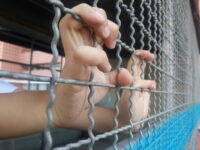
Contained in a recently released NSW Inspector of Custodial Services report, revelations around Sydney’s Mary Wade Correctional Centre routinely strip searching women imprisoned within the state-run facility sparked public outrage.
This was especially so as it came on the back of the reports of the mass strip search incident involving dozens of women at Qatar’s Doha International Airport, which led federal Labor MP Joel Fitzgibbon to condemn the incident as “state-sanctioned sexual assault”.
However, it’s just come to light via another of the inspector’s reports that like Corrective Services, Youth Justice NSW is also strip searching the young people it’s detaining in state centres. Although, it prefers to use the term “partially clothed body” (PCB) searches.
Released on 15 December, the Inspection of Six Youth Justice Centres in NSW report covers the findings of the 2019 inspections of the Reiby, Cobham, Frank Baxter, Acmena, Orana, and Riverina youth justice centres. The document also makes 51 recommendations for improvements.
Besides noting the routine practice of searching the 10 to 21-year-old inmates, the report raises concerns over a centre providing second hand underwear, as well as the potentially illegal practice of holding children in confinement without proper bedding and in some cases, no running water.
And given the disproportionate number of Aboriginal youth detainees – around 40 percent of the NSW young prisoner population – this is definitely a First Nations issue.
A strip search by any other name
“The NSW inspectorate report found – in contradiction to the legislation – that Cobham, Reiby and Riverina youth justice centres were routinely partial body searching young people before and after visits,” said Australia OPCAT Network coordinator Steven Caruana.
Over the 12 months to May 2019, “3,939 PCB searches were conducted at Cobham with a total of 23 contraband items found,” he continued. “This represents a mere 0.58 percent strike rate, adding even more evidence to the ineffectiveness of this invasive practice.”
Following a 2018 amendment, regulation 11A of the Children (Detention Centres) Regulation 2015 sets out that partially clothed body searches require a child to remove either the top or bottom half of their clothing, prior to repeating the process for the other half.
These searches permit a visual inspection of the partially naked youth. The procedure can’t involve actual touching or the searching of body cavities, except for a visual inspection of inside the mouth.
And the law stipulates that PCB searches cannot be routine, except in the case of when a youth enters a facility.
According to Caruana, this is not the first time the NSW inspectorate has raised the issue of youth searches. It did so in a 2015 report and another from 2018, while the Human Rights Law Centre raised concerns last year.
“In response, NSW minister for families and communities Gareth Ward defended the searches as being ‘entirely appropriate’,” Caruana further told Sydney Criminal Lawyers.
“It should not take five years and three reports for Youth Justice NSW to make changes and follow its own legislation. It is frankly inexcusable.”
Traumatising youths routinely
Just to give some perspective on how partially clothed body searches conducted within NSW youth facilities are basically no different to strip searches in general, one only has to consider how strip searches are being carried out upon some adult prisons in this state.
The custodial operations policy and procedures of Corrective Services NSW outlines that in strip searching women prisoners an inmate must be instructed to remove the top half of their clothing for inspection before removing the bottom half.
This is defined as a strip search and it’s completely the same as a partially clothed body search.
The report on Mary Wade prison explained that staff at the facility were aware that they should “allow for a woman to remain partially clothed at all times” during a strip search, although there were suggestions of some “inconsistency of practice”.
The main issue around strip searching women in prison is that most of those inside have suffered some form of abuse in the past. And strip searches are known not only to be traumatic experiences in and of themselves, but in the case of sexual assault survivors, they’re known to be retraumatising.
This is certainly the case for children as well. As part of its inquiry into the widespread use of strip searches by NSW police, the state police oversight body the Law Enforcement Conduct Commission (the LECC) engaged the expertise of Dr Susan Pulman.
The psychologist found that as young people’s brains are still developing, they’re especially vulnerable to traumatic experiences, and strip searches have the potential to retraumatise those who have been sexually abused.
“Children and young people subjected to these searches may suffer trauma, anxiety, fear, shame, guilt, powerlessness and stress,” Dr Pulman made clear in her report.
Humiliation is not essential
The sixth recommendation made by the NSW Inspector of Custodial Services is that Youth Justice NSW “staff are trained on the legislative provisions around partially clothed body searches and cease routine partially clothed body searches before and after visits”.
However, there are mounting voices in the community calling for the cessation of strip searches in correctional facilities all together. And these calls extend to the practice of searching civilians out in public or at events, like music festivals, by NSW police.
Triggered by the Mary Wade revelations, the Ban Strip Searches in NSW Coalition formed and staged a protest at Silverwater Correctional Centre in November, calling for an end to this invasive practice being used upon women prisoners, all inmates and in general throughout the state.
As mentioned, Caruana is the coordinator of the Australia OPCAT Network. It’s involved in the coming rollout of the UN governed OPCAT system of independent oversight bodies inspecting places of detention, with a view to preventing rights abuses before they occur.
“We can expect a focus of OPCAT inspection bodies to be minimising and/or abolishing routine and invasive body searches,” Caruana maintained. And he added that what the recent report highlights is there’s a “need for trauma-informed alternatives, such as body scanners”.
And that leads to the final point made by the NSW inspectorate regarding PCB searches at youth centres. Its report set out that body scanners are “thorough” in contraband detection and are already being introduced into adult facilities in this state, so Youth Justice NSW needs to follow suit.


